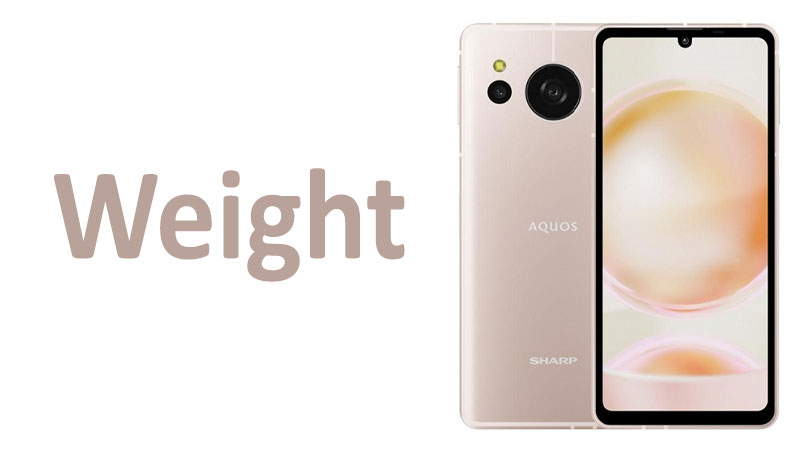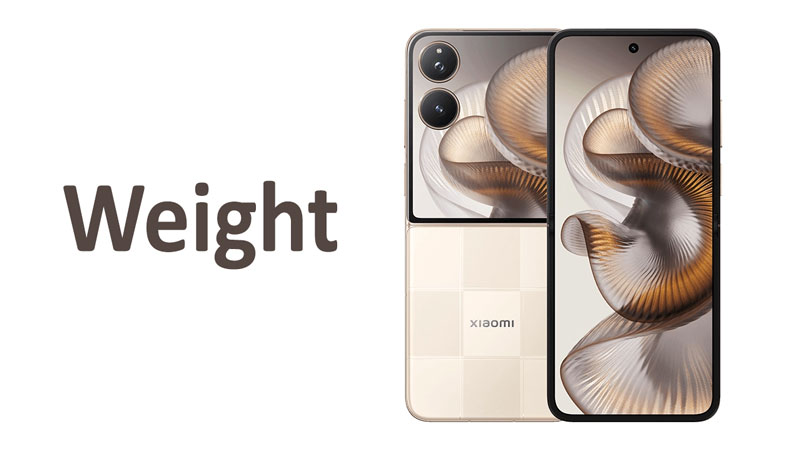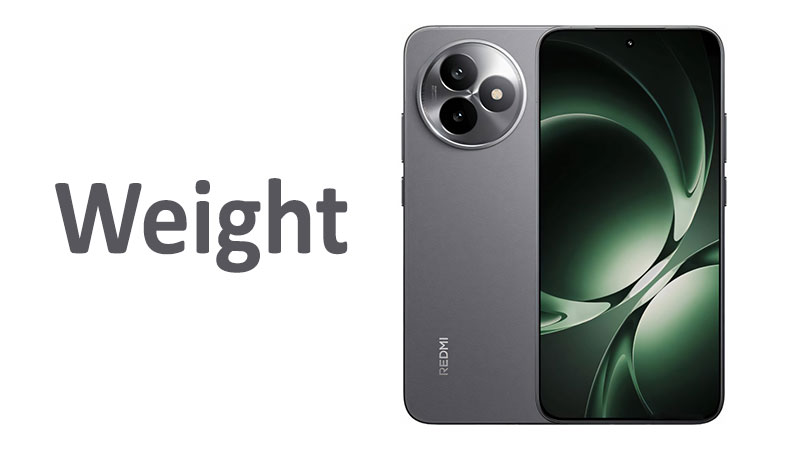The Sharp Aquos sense8 weight immediately positions the device as a standout contender in the global smartphone market. This model achieves a remarkable balance between a large battery capacity and an extremely lightweight design. This article provides a comprehensive analysis of the Sharp Aquos sense8’s mass, exploring its measurements in both grams and ounces. We will examine the innovative engineering behind this feat and compare its lightweight nature against both its predecessor and key competitors. Understanding the phone’s weight is critical for consumers prioritizing comfort, portability, and all-day use.
The Critical Role of Smartphone Weight in User Experience
Smartphone weight moved from a minor specification to a major buying criterion in recent years. As screens grew larger and batteries became bigger, phone weights often exceeded 200 grams. This increase in mass significantly impacts daily usability. Heavy smartphones can cause hand fatigue during extended browsing sessions or gaming. They also make the device feel bulky in a pocket or bag.
Sharp specifically engineered the Aquos sense8 to address this mass inflation trend. They focused on creating a phone that delivers flagship-level features without the corresponding flagship bulk. The resulting lightweight chassis transforms the user experience. It allows for effortless one-handed operation. It also enhances the overall portability of the device.
The engineering focus on weight directly influences consumer satisfaction. A lighter device is often perceived as more premium and easier to handle. This dedication to ergonomic design is a primary selling point for the Sharp Aquos sense8.
Exact Weight Specifications: Grams and Ounces
The precise mass of the Sharp Aquos sense8 is one of its most compelling specifications. This detail is often overlooked by mainstream reviewers. However, it is fundamentally important for users who carry their phone all day.
Sharp Aquos sense8 Weight in Grams
The official weight of the Sharp Aquos sense8 is exactly 159 grams. This measurement places it firmly in the category of ultra-lightweight smartphones. In an industry where devices frequently weigh between 180 and 220 grams, 159 grams represents a significant reduction. This low mass is particularly impressive considering the high-capacity battery housed within the device. The 5000 mAh battery is often found in much heavier smartphones.
The 159-gram figure is the benchmark for its class. It demonstrates Sharp’s commitment to minimizing material while maintaining structural integrity. Engineers optimize every component, from the display to the chipset, for efficiency and low mass. This optimization allows the phone to feel almost weightless during casual use.
Sharp Aquos sense8 Weight in Ounces
For users in regions preferring Imperial measurements, the 159 grams translates to approximately 5.61 ounces. This measurement is equally impressive. A weight of 5.61 ounces is incredibly low for a modern smartphone featuring a 6.1-inch display.
The low ounce count emphasizes the portability advantage of the Aquos sense8. Users can comfortably carry the device in a shirt pocket or lightweight clothing. The reduced weight makes it less likely to pull down fabric or feel cumbersome. This practical portability sets the Aquos sense8 apart from its heavier rivals.
Engineering the Lightweight Marvel
Achieving a weight of 159 grams while including a robust 5000 mAh battery is a true engineering accomplishment. Sharp used several advanced technologies and material choices to minimize the overall device mass. The combination of a large battery and a lightweight body is a highly sought-after feature in the modern smartphone market.
The Role of IGZO OLED Technology
Sharp utilizes its proprietary IGZO OLED display technology in the Aquos sense8. IGZO stands for Indium Gallium Zinc Oxide. This material is used in the display panel’s thin-film transistors. IGZO technology offers superior power efficiency compared to standard OLED screens.
The efficiency of the IGZO display directly impacts the overall weight. Because the screen consumes less power, the phone does not need to allocate as much internal space or mass to thermal dissipation systems. This power saving also complements the massive 5000 mAh battery. Reduced power consumption means less strain on the battery.
This highly efficient display architecture contributes to both the low Sharp Aquos sense8 weight and its acclaimed two-day battery life. It is a key factor in the phone’s design philosophy.
Material Selection and Frame Construction
Sharp focused on smart material choices for the Aquos sense8’s body. The device features an aluminum frame and back panel. Aluminum is a lightweight and durable metal, offering an excellent strength-to-weight ratio. Using aluminum instead of denser materials like stainless steel helps keep the mass down.
The structural design also plays a critical role. The chassis is engineered to be thin, measuring just 8.4 mm in depth. Despite this slim profile, the phone maintains high durability. It boasts MIL-STD-810H compliance for shock and drop resistance. This combination of lightness and ruggedness is rare in the smartphone industry. Buyers get a durable phone without sacrificing portability.
Efficient Internal Component Layout
The Qualcomm Snapdragon 6 Gen 1 chipset also aids in reducing mass. This 4nm processor is highly power-efficient. It produces less heat than higher-end, performance-focused chipsets. Less heat generation means the phone requires a smaller, lighter cooling system.
Every internal component, including the camera module with Optical Image Stabilization (OIS), is integrated efficiently. Sharp designed the layout to maximize space utilization. This meticulous approach prevents unnecessary bulk, keeping the overall Sharp Aquos sense8 weight remarkably low. The internal efficiency is what makes the 159 grams possible.
Specialized Comparisons with Competitors
The 159-gram mass of the Sharp Aquos sense8 becomes even more striking when compared to other popular smartphones in the market. Its lightness is a significant advantage, particularly in the mid-range and compact segments. We can evaluate the sense8’s weight against its predecessor and key market rivals.
Comparison with the Predecessor: Sharp Aquos sense7
Sharp’s commitment to lightweight design is evident in the marginal increase between the sense7 and the sense8. The older Sharp Aquos sense7 weighed 158 grams. This means the Sharp Aquos sense8 weight of 159 grams is only 1 gram heavier. This tiny increase is negligible to the user.
However, the change in internal components is massive. The Aquos sense8 significantly upgraded its battery capacity to 5000 mAh. The sense7 had a 4570 mAh battery. Increasing the battery size by over 400 mAh without adding any noticeable weight is an impressive engineering feat. It solidifies Sharp’s position as a leader in power-to-weight ratio optimization.
The sense8 also features a larger 1/1.55-inch main camera sensor with OIS. Larger sensors typically add mass to a device. Sharp managed to incorporate this larger, heavier component while maintaining almost the exact same overall weight. This comparison highlights the successful design optimizations in the new model.
Comparison with Compact Flagships
Even when compared to flagship phones praised for their compact form factor, the Sharp Aquos sense8 holds its own. Compact flagships often sacrifice battery size to maintain a lower weight. The Aquos sense8 manages to be lighter while retaining a huge battery.
For example, the compact model of the Samsung Galaxy S series often weighs around 162 grams. The Sharp Aquos sense8 weight is three grams lighter at 159 grams. This is despite the Galaxy S phones often having smaller batteries, sometimes around 4000 mAh.
Another competitor, the Apple iPhone, typically starts its weight in the mid-160s. The iPhone 16e, a mid-range compact competitor, weighs approximately 167 grams. The Aquos sense8 remains lighter than both of these key competitors. This comparison underscores the phone’s exceptional design efficiency.
Comparison with Mid-Range Rivals
The mid-range market is where the Sharp Aquos sense8 truly excels in terms of mass. Most mid-range smartphones prioritize large screens and batteries over weight optimization. They often use heavier internal components and less advanced, denser materials.
The Google Pixel A-series, a popular mid-range option, often weighs in the range of 186 grams or more. The difference of nearly 30 grams between the Pixel A-series and the Sharp Aquos sense8 weight is substantial. This weight difference is immediately noticeable when holding the devices side-by-side.
Other large-display mid-range phones, like some models from OnePlus or Xiaomi, routinely exceed 200 grams. This makes the Aquos sense8 feel like a feather by comparison. The 159-gram specification is a clear competitive advantage in the value segment. Buyers who want a manageable, comfortable phone have a strong reason to choose the Sharp Aquos sense8.
The User Experience: Pros and Cons of a Lightweight Design
The low Sharp Aquos sense8 weight provides numerous benefits for the user, but it also presents a few design trade-offs. It is important for potential buyers to understand both the advantages and the disadvantages inherent in this lightweight approach.
Advantages of Low Mass
The primary benefit of the 159-gram weight is supreme comfort and ergonomics. The phone minimizes wrist strain during prolonged use. This is crucial for commuters, avid readers, or mobile gamers. Users can easily manage the phone one-handed without fatigue.
Portability is another major pro. The light mass makes the device highly pocket-friendly. It slips into clothing easily and does not create an imbalance or bulge. This is particularly appealing to users who dislike carrying bulky accessories or bags.
Furthermore, the low Sharp Aquos sense8 weight is paired with exceptional battery life. The 5000 mAh battery provides up to two days of use. This combination—powerful longevity without the expected weight penalty—is what defines the Aquos sense8 experience. It offers true freedom from charging anxiety without the associated bulk.
Potential Trade-offs and Cons
While light weight is generally a positive, some users may associate low mass with a lack of “premium” feel. Some higher-end flagships feel substantial due to the use of heavy materials like steel and ceramic. The Sharp Aquos sense8, with its aluminum construction, might feel less dense to these users.
Another consideration is perceived durability. Despite the phone meeting the MIL-STD-810H military durability standard, the light feel might lead some users to worry about its toughness. Sharp assures buyers of the phone’s resilience, but the psychological perception of weight equating to strength can be a factor.
Finally, the focus on lightness means Sharp prioritized components that contribute to weight savings. This could mean some heavier components, such as advanced haptic motors or larger speakers, were scaled back. While the phone delivers a great overall experience, these minor component compromises are sometimes necessary to hit the 159-gram target.
Essential Buying Considerations for the Sharp Aquos Sense8
Buyers evaluating the Sharp Aquos sense8 should understand how its defining feature—the lightweight design—integrates with the rest of its specifications. The weight is not an isolated factor; it is central to the phone’s entire design philosophy.
Durability and Lightness
The phone’s MIL-STD-810H compliance addresses concerns about fragility. This standard confirms the device can withstand various environmental stresses, including drops. Users do not sacrifice durability for the low Sharp Aquos sense8 weight. The aluminum construction is inherently tough. The design successfully marries a light body with exceptional resilience. This combination is ideal for active users who need a robust yet manageable device.
Thermal Management
The lightweight construction benefits from the efficient Snapdragon 6 Gen 1 processor. This means the phone typically runs cooler than devices with high-performance chips. While intense gaming will generate heat, the overall thermal management is excellent due to the chip’s efficiency and the cooling solutions. The light chassis does not overheat easily. This improved thermal performance contributes to better long-term battery health and sustained performance.
Portability and Dimensions
The light weight pairs perfectly with the compact physical dimensions. The phone measures 153 mm tall, 71 mm wide, and 8.4 mm thick. The narrow 71 mm width makes the device easy to grip. Combining these compact dimensions with the 159-gram weight results in one of the most comfortable phones available. This design is highly suitable for users who prefer smaller, more manageable devices over large, unwieldy phablets. The dimensions enhance the lightness perception.
Thorough Examination of Weight-Related Benefits
The decision to minimize the Sharp Aquos sense8 weight extends benefits far beyond basic ergonomics. This design choice influences the device’s sustainability, manufacturing efficiency, and overall market niche. The focus on low mass creates a holistic improvement in the product.
Impact on Sustainability and Materials
Sharp’s engineering strategy suggests an efficient use of materials. Producing a lighter device often translates to lower material consumption per unit. This reduced resource requirement aligns with growing consumer interest in sustainable electronics. By using less material and focusing on highly efficient components like the IGZO display, Sharp reduces the environmental footprint of the device. Consumers increasingly value this thoughtful material efficiency.
Market Positioning as an “Anti-Flagship”
The Sharp Aquos sense8 weight serves as a key differentiator. Flagship phones prioritize absolute performance and high-density, expensive materials. These choices invariably lead to heavier devices. By focusing on a featherlight design, the Aquos sense8 carves out a niche as the “anti-flagship.” It offers premium features, like OIS and a 5000 mAh battery, in a package flagships cannot match in terms of comfort and portability. This market positioning appeals strongly to a specific and loyal segment of users. These are the buyers who are tired of bulky, heavy phones.
Ergonomics for Specialized Use
The low mass is especially beneficial for users with specialized needs. Professionals who use their phone constantly for dictation or fieldwork benefit from the reduced wrist stress. Senior users, or those with mobility issues, find the Sharp Aquos sense8 weight much easier to handle. The weight profile makes the phone accessible to a wider demographic than heavier alternatives. The 159 grams is not just a specification; it is an accessibility feature.
The phone’s slimness, at 8.4 mm, also plays into this. Thinness combined with light weight allows the phone to slide easily into any mounting system or clip. This is useful for cyclists, runners, or drivers who rely on external phone mounts. The reduced mass minimizes vibration and stress on the mounting mechanism.
Conclusion: Making the Informed Decision
The Sharp Aquos sense8 weight of 159 grams (5.61 ounces) is more than just a specification; it is a core feature that defines the user experience. Sharp achieved an extraordinary balance by integrating a massive 5000 mAh battery and an advanced IGZO OLED screen into an ultra-light aluminum frame. This feat of engineering results in a smartphone that is exceptionally comfortable to hold, highly portable, and remarkably durable (MIL-STD compliant).
Buyers seeking a premium mid-range device that eliminates hand fatigue and pocket bulk should place the Sharp Aquos sense8 at the top of their list. It offers a unique proposition: two-day battery life without the heavy penalty common to rival devices. While the sensation of a light phone may take adjustment for users accustomed to heavier models, the long-term ergonomic benefits are undeniable. The Sharp Aquos sense8 successfully delivers a powerful, long-lasting, and featherlight experience.
Frequently Asked Questions (FAQ)
What material helps keep the Sharp Aquos sense8 so lightweight?
Sharp uses an aluminum frame and back construction. Aluminum offers high strength and durability while maintaining a low mass compared to materials like steel or glass used in other smartphones. The efficient component layout also contributes to the low Sharp Aquos sense8 weight.
Does the 159-gram weight mean the Sharp Aquos sense8 has a small battery?
No, the phone has an impressively large 5000 mAh battery. The low weight is achieved through engineering efficiency, particularly the power-saving IGZO OLED display and the lightweight aluminum structure, not by compromising on battery capacity.
How does the weight of the Sharp Aquos sense8 compare to the previous Aquos sense7 model?
The Sharp Aquos sense8 weight is 159 grams, which is only 1 gram heavier than its predecessor, the Aquos sense7 (158 grams). This is notable because the sense8 includes a larger 5000 mAh battery and a larger main camera sensor.
Is the Sharp Aquos sense8 durable despite being so light?
Yes, the device is highly durable. It complies with the U.S. military-grade standard MIL-STD-810H. This means the light phone offers excellent resistance to shock, drops, and environmental stresses. Durability was not sacrificed for low mass.
Does the low weight affect one-handed use of the phone?
The low 159-gram weight significantly improves one-handed usability. It minimizes the physical strain and fatigue often associated with holding a phone for extended periods. The narrow 71 mm width further enhances grip comfort.



